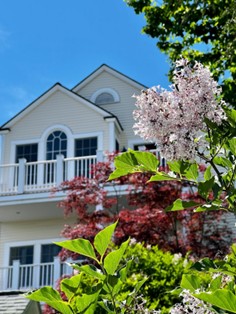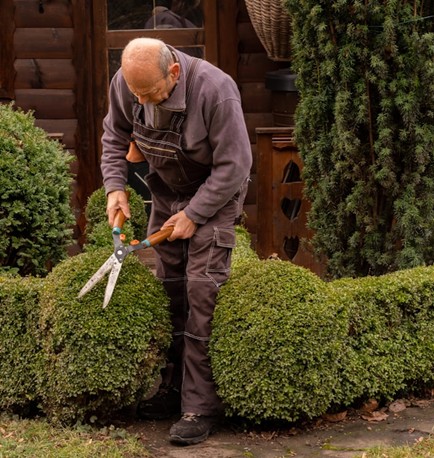When it comes to selling or simply maintaining the beauty of a home, curb appeal plays a significant role. It creates the first impression for potential buyers, guests, and passersby, setting the tone for what’s inside. Landscaping, one of the most influential elements of curb appeal, can dramatically affect the value and aesthetic of a home. The following article explores the importance of curb appeal and how thoughtful design enhances the overall appearance and value of your property.

Curb appeal is not just about aesthetic appeal; it’s about how your home makes people feel. Whether you are looking to sell or you simply want your home to make a great impression on visitors, the exterior of your property communicates a message. A well-maintained lawn, beautiful flowers, and manicured shrubs suggest that the homeowner cares about the property and invests in upkeep. On the other hand, a neglected exterior with overgrown grass, dead plants, and peeling paint can send a message of disinterest, which can lead to a negative first impression.
Curb appeal affects many aspects of your homeownership, from emotional satisfaction to financial value. It influences potential buyers’ perception of your home’s worth, and in many cases, it can even affect the asking price. A well-kept home with attractive landscaping can not only boost the value of your home but also help sell your property faster. In fact, landscaping can increase a home’s value by up to 12.5 percent.
When homeowners invest in the exterior of the home, they are making an investment in both the appearance and value of their property. Landscaping can have an immediate impact, transforming an ordinary home into one with extraordinary charm. Whether you’re adding a new layer of mulch, planting colorful flowers, installing a decorative path, or adding trees for shade, each element contributes to your home’s overall curb appeal. Landscaping is not just a cosmetic change; it can improve your home’s energy efficiency, functionality, and livability as well.
For example, planting trees in the right places can provide shade to reduce cooling costs in the summer. Likewise, proper landscaping with native plants can reduce water usage, making your yard both beautiful and environmentally friendly. The return on investment (ROI) from landscaping projects is significant, with many improvements paying for themselves when it comes time to sell.
There are many aspects of garden design that can be used to enhance your home’s curb appeal. Let’s explore the most effective elements to focus on when improving your home’s exterior:
A healthy, lush lawn is often the first thing people notice about a home’s exterior. Keeping your lawn neat, green, and free from weeds can make a dramatic difference in your home’s curb appeal. Regular mowing, edging, and trimming of the grass are essential for a well-maintained lawn. If your lawn is patchy or worn, overseeding or reseeding can help restore it to its former glory.
It’s also important to water your lawn properly. A dehydrated lawn can quickly turn brown, which not only affects its beauty but also impacts the overall curb appeal of your home. Be mindful of local regulations on water usage, and choose water-efficient grass varieties that thrive in your region’s climate.

Adding flowers and shrubs to your landscaping can instantly brighten the exterior of your home. Colorful flowers add vibrancy and a welcoming feel to the entrance and garden beds, while carefully chosen shrubs can provide structure and privacy. Consider planting perennial flowers that bloom year after year, so you can enjoy color without having to replant every season.
When selecting plants, consider your local climate and the amount of sunlight your front yard receives. Opt for plants that are well-suited to your region, as these will thrive with less maintenance. Layering plants at different heights and textures creates visual interest and adds dimension to your landscape. It’s also a good idea to select a mix of evergreen plants and deciduous shrubs to provide year-round interest.
Trees can be a defining feature of your yard, and when properly placed, they can add both beauty and function to your home’s curb appeal. Trees provide shade, reduce energy costs, improve air quality, and even increase the overall value of your home. When planting trees, be sure to consider their size at maturity, as large trees too close to the house can cause problems with foundations and roofs.
In addition to planting new trees, caring for your existing trees is essential for maintaining their appearance and health. Regular pruning helps to remove dead or damaged branches, while also improving the overall shape of the tree. When trees are properly maintained, they can be a striking focal point in your landscape.
Hardscaping refers to the non-plant elements of your landscape, such as paths, patios, and retaining walls. These features can significantly enhance your home’s curb appeal by adding structure, functionality, and elegance to the front yard. A well-designed path leading to your front door can guide guests to your entrance while also adding visual appeal. Materials like stone, brick, or gravel can be used to create a unique, aesthetically pleasing path.
Retaining walls can be used to create elevated garden beds or define different sections of your yard. These walls not only improve the landscape’s design but can also prevent soil erosion and provide additional space for planting. Patios and decks can expand your living space outdoors, adding areas for relaxing or entertaining.

Outdoor lighting can dramatically affect your home’s curb appeal, especially in the evening. Landscape lighting enhances your property’s aesthetic by illuminating key features of your garden, trees, and architectural elements of your home. Pathway lights guide guests to your door, while spotlights can highlight the beauty of your trees or decorative landscaping features.
Beyond aesthetics, outdoor lighting increases the safety and security of your home, deterring intruders by making your property well-lit at night. It also creates an inviting atmosphere for evening gatherings, adding warmth and charm to your outdoor space.
Protecting exposed soil is another landscaping element that significantly enhances curb appeal. It helps keep weeds at bay, retains moisture in the soil, and adds a polished look to flower beds and garden areas. Ground covers can be anything from wood chips to plants that spread.
Ground covers such as low-growing, spreading plants or grasses are another excellent way to add texture and color to your garden. They help to prevent erosion and fill in areas that are too difficult to maintain with a traditional lawn. These ground covers can create a clean, cohesive look while requiring minimal upkeep.
While curb appeal is important for the immediate impression it makes, investing in your landscaping is also essential for your home’s long-term value. Well-maintained landscapes tend to age better than homes with neglected exteriors. Trees, shrubs, and plants that are cared for and thoughtfully planned can add value to your home by increasing its overall appeal and enhancing its natural beauty.
Landscaping also plays a role in environmental sustainability. By choosing native plants, reducing water usage, and incorporating eco-friendly materials, homeowners can reduce their environmental footprint while enhancing their home’s appeal. Landscaping projects such as rain gardens, xeriscaping, and green roofs help promote environmental stewardship while creating a beautiful and sustainable outdoor space.
Curb appeal is one of the most important factors in creating a lasting first impression of your home. Landscaping has the power to transform your front yard, increasing its attractiveness and functionality. By investing in thoughtful design, regular maintenance, and incorporating elements like plants, trees, hardscaping, and lighting, homeowners can enhance their property’s curb appeal and its overall value.
Whether you’re selling your home or simply looking to create a more inviting and beautiful environment, landscaping can make a significant difference. A well-landscaped home speaks volumes about the care and attention you’ve put into it, creating a space that is welcoming, attractive, and valuable for years to come.